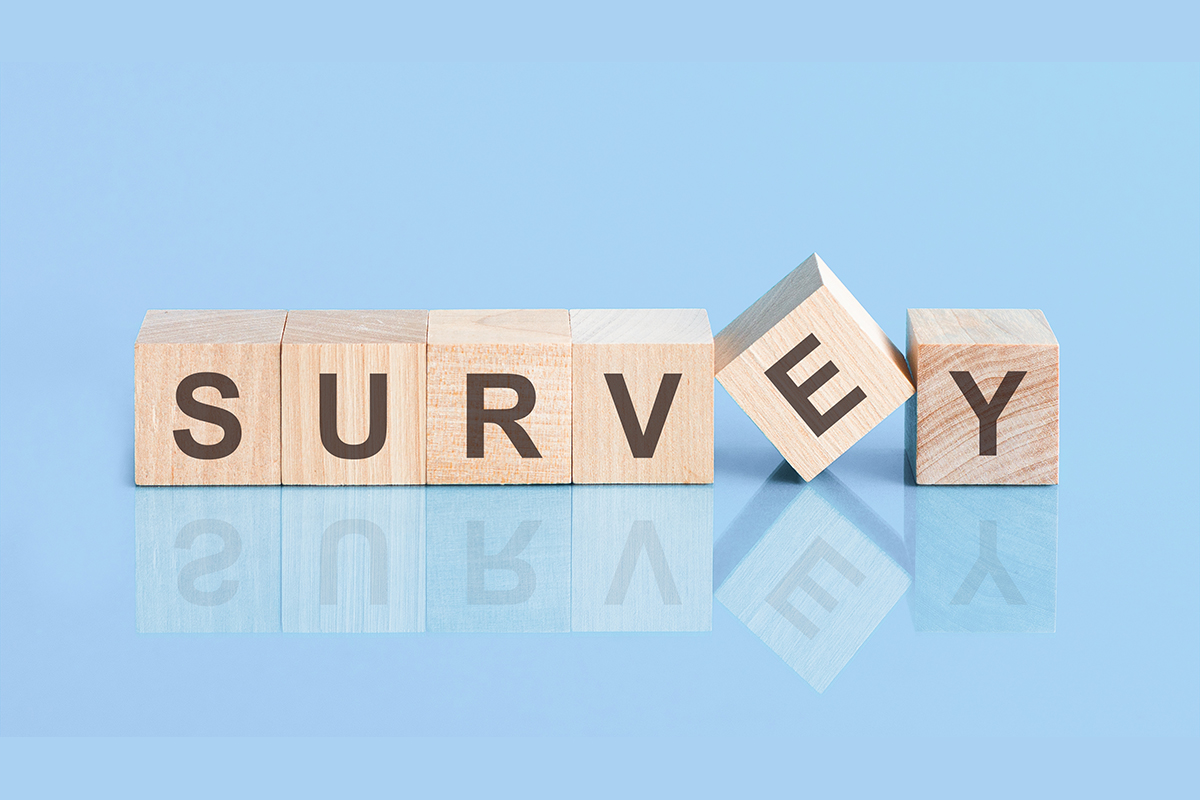Are you looking for ways to increase feedback response rates for your surveys? That’s exactly what we’ll cover. We’ll show you exactly what do to get high response rates.
When designing a survey, it’s essential to make sure as many people as possible respond. After all, the more people who take the survey, the more accurate your data.
This blog post will outline methods to get more people to respond to your surveys and boost feedback from survey participants.
Let’s get started!
Collect feedback with JustFeedback
JustFeedback helps your business increase profits and reduce risk by improving your customer experience
What is a survey response rate?
A customer satisfaction survey is market research that allows you to collect valuable insights directly from your target market.
The result of the survey is a survey response rate, which is the percentage of people who respond to a survey out of the total number of people who received it.
To calculate the survey response rate, divide the number of respondents by the number of surveys sent. Then multiply by 100 to get a percentage.
For example, if you sent out 1,000 surveys and 250 people responded, your survey response rate would be 25% (250 / 1,000 = 0.25 x 100 = 25%).
There is a difference between response rate and completion rate. The two rates are often confused, but they’re quite different.
Survey response rate:
Survey response rates are the percentage of people who respond to a survey out of the total number of people who received it.
A high response rate means you’re doing a good job of getting people to start your survey, but it doesn’t necessarily mean they’re completing it.
Survey Completion rate:
On the other hand, completion rates are the percentage of customer feedback surveys that respondents actually complete.
A high completion rate means people are sticking with your survey until the end.

How do you increase survey response rates?
There are a number of steps you can take to increase your survey response rates.
1. Make it easy for respondents to take the survey:
One of the most important factors in getting people to respond to a survey is making it easy for them to do so. This means that keep the survey short and to the point. It should also be easy to understand and fill out.
2. Pick the right platforms to display surveys:
Another important factor in increasing survey response rates is to pick the right platforms to display your surveys.
For example, if you are surveying a group of people who are busy, you will probably have a lower response rate if you display the survey on a website that is hard to navigate.
Also, choose the platform where the audience is likely to see it.
3. Keep surveys short and to the point:
Longer surveys are a big reasons why people abandon them before completion. If your survey is too long, people will simply lose interest and stop responding.
To keep survey respondents engaged, make sure your surveys are short and to the point. Also add progress bar in the survey if you have multiple questions to show the respondents how much more they have to answer.
4. Use an incentive:
Another way is to encourage customers and increase survey responses is to use survey incentives. This can be anything from a discount on a product to a chance to win a prize.
By offering an incentive, you can increase the number of people who are willing to take the time to fill out the survey. When a customer’s time is valuable, using an incentive is a great way to get more survey responses.
5. Promote the survey:
If you want people to respond to your survey, you need to promote it. This can be done through email, social media, or even by word of mouth. You can also offer respondents to forward the survey to a friend or be entered into a drawing for a chance to win a prize.
The more people who know about the survey project, the more likely it is that you will get responses.
6. Personalize the survey:
Another way to make it more likely that people will respond to your survey is to personalize it. This means that you should address the survey to the individual respondent by name to increase engagement.
Additionally, you can include a personal message in the survey itself. By personalizing the survey, you can make it more likely that people will take the time to fill it out.
7. Make sure the survey is relevant:
If you want people to respond to your survey, it is important to make sure that the survey is relevant to them. This means that the questions should be relevant to their interests and experiences.
Additionally, the survey should be relevant to the time and place in which they are taking it. By making sure the survey is relevant, you can increase the chance that people will take the time to fill it out.
8. Follow up with non-respondents:
Finally, it is important to follow up with people who do not respond to the survey. This can be done by sending them a reminder email or calling them.
By following up with non-respondents, you can increase the chances that they will take the time to fill out the survey.
Allowing your customer time to use a product before sending them a survey will give you more meaningful feedback because they have enough context.
9. Optimize surveys for all devices:
It’s important to make sure that they can be easily completed on all devices. This means that they should be optimized for mobile devices, PCs, and tablets. By doing this, you will make it more likely that people will take the time to fill out the survey.
Surveys that are optimized for all devices are more user-friendly and accessible, which makes them more likely to be completed. In addition, surveys that are optimized for all devices tend to be more accurate and reliable.
This is because people are less likely to skip questions or provide inaccurate data when they can easily access the survey on their preferred device.
These are just a few of the ways you can increase your survey response rates. By taking these steps, you can make it more likely that people will take the time to fill out your survey.

The benefits of a high survey response rate
There are several benefits of gathering feedback and having a high response rate for your survey. Customers who provide relevant feedback are more likely to be engaged with your brand, and they are also more likely to continue doing business with you.
1. You’ll Get More Accurate Data:
If you have a high survey response rate, you can be confident that the data you’re collecting is accurate. This is because you’ll have more feedback to work with, which means that any outliers will be less likely to skew your results.
2. You’ll Save Time and Money:
Collecting accurate data doesn’t just mean collecting more data. It also means spending less time and money on your research project overall.
With a high survey response rate, you can collect the data you need in a shorter period of time, which saves both time and money.
3. You’ll Get Better Insights:
When you have more customer survey data to work with, you’ll be able to get deeper insights into your customers’ needs and wants.
This can help you make better decisions about your products and services, and it can also help you improve your marketing efforts.
4. You’ll Build Better Relationships:
When you collect accurate data, you can use it to build better relationships with your customers. You can show them that you’re listening to their feedback and that you’re taking their needs into account.
This can help build trust and loyalty, which are essential for any business.
Factors affecting the survey response rate
There are a number of factors that can impact response rates, such as the target audience, the length of the survey, the topic being surveyed, the method of delivery, and even the time of year.
1. The topic of the survey:
One of the most important factors is the topic of the survey. If you are surveying a group of people who are interested in the topic, they are more likely to respond than if you are surveying a group that is not interested in the topic.
For example, suppose you are surveying billionaires about their philanthropic habits. In that case, you will probably have a higher response rate than if you were surveying high school students about their favorite fast-food restaurants.
2. The target audience:
Another important factor is the target audience. Suppose you are surveying a group of people who are difficult to reach, such as busy professionals or stay-at-home parents.
In that case, you will probably have a lower response rate than if you were surveying a group that is easy to reach, such as college students.
3. The age factor:
If the target audience is young adults, you have to tailor the questions and language to be more appropriate for that demographic. This increases the chances that people will take the time to fill out the survey.
However, if the target audience is senior citizens, you might use different question wording and have a less formal tone in order to make the survey more accessible. By tailoring the survey to the target audience, you can increase the response rate.
4. Method of delivery:
The method of delivery can also impact response rates. For example, if you are sending a paper survey through the mail, you will probably have a lower response rate than if you were administering the survey online.
This is because it is easier for people to fill out a survey online than it is to fill out a paper survey. Additionally, people are more likely to respond to a survey if it is easy to do so.
5. Length of the survey:
Another important factor is the length of the survey. If you are surveying a group of people who are busy, you will probably have a lower response rate if the survey is long.
This is because people are more likely to respond to a short survey than a long survey.
6. The time of year:
The survey timing can also impact response rates. For example, surveys sent out during the summer months will probably have a lower response rate than surveys sent out during the winter months.
This is because people are more likely to be on vacation during the summer and less likely to be available to fill out a survey.
Before we dive into how to increase survey feedback response rates, let’s first talk about why you should care about response rates in the first place.

What is the average survey response rate?
Surveys are an important tool for collecting data, but their usefulness depends on getting a high survey responses.
The average survey response rate is between 40-45%. This means that for every 100 people who receive a survey, only 40 to 45 will actually fill it out and return it.
Why should you care about response rates?
- A high response rate means that you are getting relevant feedback from your target audience
- A high response rate helps to build trust and loyalty with your customers
- A high response rate can help you improve your products and services
- A high response rate can help you identify customer needs and wants
Now that we’ve talked about why you should care about response rates let’s talk about how to increase survey response rates.
Why do people quit the survey before completion?
There are a number of reasons why people do not complete feedback surveys and quit a survey before it’s completed. Some of the most common include:
- The survey is too long
- The questions are confusing
- The questions are irrelevant to the respondent
- The survey is poorly designed
- The respondent is not interested in the topic
Different methods of surveys
There are many different methods of conducting surveys, and the best method to use depends on the type of information you are hoping to gather. Some common survey methods include:
1. Self-administered surveys:
These can be delivered online, via mail, or in person and allow respondents to answer questions at their own pace. This method is good for gathering detailed responses to complex questions.
2. Email surveys:
Email survey is sent out via email and typically has a low response rate. This method is good for brief surveys with simple questions. It is the most common type of survey used.
3. Web surveys:
This type of survey is conducted online and allows respondents to answer questions in real-time. Web surveys typically have a higher response rate than email surveys.
4. Telephone surveys:
This type of survey is conducted over the phone and allows respondents to answer questions in real-time.
The phone calls method is good for gathering detailed responses to complex questions. Telephone surveys typically have immediate feedback and a higher response rate than email or web surveys.
5. Interviews:
Survey interviews can be conducted in person, over the phone, or online. They allow for a back-and-forth discussion between the interviewer and respondent, which can be helpful for clarifying answers or probing deeper on certain topics.
6. Focus groups:
Focus groups bring together a small group of people (usually 6-10) to discuss a particular topic. This method can be used to generate new ideas or gather feedback on existing ones.

Some other helpful tips for customer surveys
- Make sure that you’re collecting feedback in the right way.
- Send surveys after a recent purchase or service relevant to what they just bought.
- Make sure you’re asking the right people. It’s no use asking someone who’s never used your product or service for their opinion.
- Focus on people who are current or recent customers.
- You can also target specific groups of customers, such as those who made a purchase in the last month or those who have interacted with customer service.
- The subject line should be interesting and relevant to increase click-through rates of survey link.
- Avoid yes/no questions, as they’re not likely to provide helpful information. Instead, ask an open-ended question that encourages customers to share their thoughts and experiences. Open ended questions are more likely to illicit longer responses which can provide more meaningful insights.
- Take the time to follow up with customers who provide feedback.
- Thank them for their input and let them know what actions you’re taking as a result of their feedback to boost participation.
By following these tips, you can ensure that you’re getting the most out of customer feedback.
Sample template
Let’s have a look at an eye-catchy customer satisfaction survey template for a teenage girl interested in makeup products. This is an ideal template for surveying customers.
Hi!
Thanks for using (Your brand name). We’re conducting a survey to better understand our customers’ needs and interests. We hope that you will take the time to fill it out.
The survey will only take a few minutes to complete, and you will have the chance to win your favorite makeup product as a prize.
To get started, please click the link below:
(survey link)
Thank,
—-team.
The customer satisfaction survey template provided above is a great way to gather feedback from teen girls who are interested in makeup products. By using this template, you can ensure that your survey is relevant to the interests of your target audience.
Additionally, the incentive offered will help to encourage respondents to take the time to fill out the survey templates and increase participation in future surveys. Make your survey questions relevant to what you want to learn and use the template provided as a guide.
Example questionnaire
These survey questions can be added as a general guideline for a customer experience survey:
- How often do you use our product/service?
- How satisfied are you with our product/service?
- What do you think of our (brand name) makeup products?
- Are you satisfied with the quality of our (brand name) makeup products?
- What is your favorite (brand name) makeup product?
- Would you like to see more/fewer (type of product) in our range?
- Is there anything else you would like to tell us about our (brand name) makeup products?
- How easy is it to find the (brand name) makeup products you are looking for?
- What do you think of our (brand name) makeup product packaging?
Conclusion
Increasing survey feedback response rates is important because it allows you to get relevant feedback from your target audience.
By following the tips we’ve provided, you can make it easier for people to respond to more surveys and increase the chances that they will provide valuable feedback. Hope this blog post was helpful.
So what are you waiting for? Start increasing your survey response rates today!
Want To Know More? Check Our FAQ Below!
How to Ask for Customer Feedback?
There’s no one-size-fits-all answer to this question, as the best way to ask for customer feedback will vary depending on your business and relationship with your customers.
Survey emails, pop-ups on your website, in-person interactions, and post-purchase follow-ups are all great opportunities to ask for feedback. Let people know providing feedback is valuable to you by sending gentle reminder.
What is a survey response rate?
The survey response rate is the percentage of people who respond to a survey. The higher the response rate, the more representative the results will be.
How to calculate your survey response rate?
To calculate your survey response rate, divide the number of people who respond to the survey by the total number of people who receive it. For example, if 100 people receive your survey and 50 people respond, your response rate would be 50%.
What is a good feedback response rate?
The answer to this question will vary depending on your business and the type of feedback you’re looking for. However, a response rate of 50% or higher is generally considered to be good.
How do you deal with a low response rate in a survey?
If you’re dealing with a low response rate in a survey, there are a few things you can do to try to increase survey response rates. First, make sure that your survey is relevant and targeted to the right people. Additionally, follow up with non-respondents and make it easy for people to respond to your surveys.
